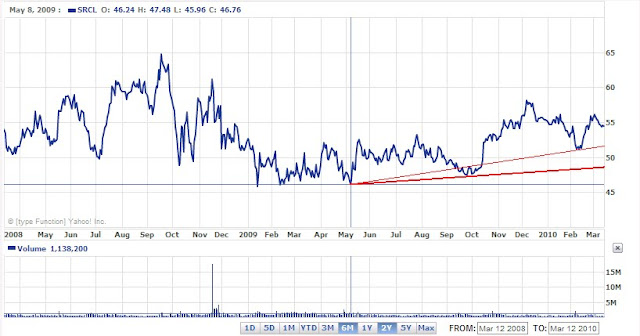Question:
Do you think Richard Russell has been overrated regarding his abilities to forecast the directions of the markets? It seems like one good call (1975) allows one in his position to reap benefits for years despite demonstrating no skill when one goes back and, with the benefit of hindsight, takes a critical look at the entire record.
Our Thoughts:
Anyone, including NLO team, who attempts to predict the stock market is under extraordinary pressure. The challenge that Russell presents is that he often ignores that he has a bias towards the market falling rather than rising. This becomes a problem when, against his experience and better judgment, Dow Theory might be indicating that the direction is up despite all the negative market fundamentals.
Again, Dow Theory is supposed to include all the current and foreseeable hopes and fears as it relates money. I think that if Russell would follow Dow Theory or even his PTI indicator more often he would get a more accurate readings on the market.
It should be noted that within the content of his Dow Theory Letters from 1958 to the present, there are many great calls. As I post more reviews of Russell’s letters, I will be able to point out too many instances of where Russell was spot on.
Unfortunately, Russell often didn’t stick to his guns or he forgot his earlier good advice or information. As an example, Russell talks about the importance of compounding. This cannot be accomplished if you’re buying and selling based on Dow Theory. Another example is Russell’s commentary on values. You can’t speak of values if you’re primarily focused on ETFs, index funds or stocks that don’t increase their dividends when plenty of them exist.
The pace and excitement of the markets become challenging for anyone to remain focused on the fundamentals. Russell has fallen astray of the basic principals of Dow Theory and value investing. Although the two seem mutually incompatible, there is a middle ground which Russell hasn’t attempted to address in all the years of his work.
Question:
I'm curious that you write "In my observations, market volume has increasingly become an addendum to Dow Theory." Meaning, only as a sidelight, or as an increasingly important variable? It does seem harder to judge given increased manipulation on light volume. Looks like lots of stick saves last week.
Answer:
It may be a function of the markets being driven by various large institutions (mutual funds, hedge funds, index funds, ETFs etc...) but volume seems to be less reliable when trying to determine sentiment and trends on the NYSE. I suspect that the diminished impact of smaller participants and derivative markets have had a lot to do with my concerns about volume not being a strong indicator. However, I will continue track volume just in case.
Question:
What did you do with the proceeds from the sale of WTR?
Answer:
After investing in WTR we recommended CEPH and SVU which generated 13% and 11% gains respectively. Both stocks were on our Watch Lists and in each case we accomplished our targets and made subsequent sell recommendations. In addition to our posted recommendations, we also participated in CWT and GENZ. Both positions accomplished our short-term after tax goals which allowed for the purchases of new stocks on our dividend Watch List.
Our article titled “
Meridian Biosciences and Other Profitable Market Lessons” provides a framework for the strategy we’d like to employ when investing in Dividend Achievers. Another article that weighs heavily on our investment decisions is titled “
It Isn’t Easy Being Green.” That article outlined Hetty Green’s approach to handling her funds when not invested in stocks. We’ve simply applied a similar strategy to Dividend Achievers and Nasdaq 100 stocks at a new low (after careful analysis).
Question:
Would you venture to provide a top pick from your current dividend achievers list?
Answer:
As you can tell, the current list has too many companies that are candidates for investment. Without providing any detailed analysis, I would say that my top four choices for additional research would be Ritchie Bros Auctioneers (
RBA), Northern Trust (
NTRS), Dentsply (
XRAY), and Meridian Biosciences (
VIVO). We expect, and hope, that the price of these stocks will fall further while we get more research in. We're using the March 2009 low as our benchmark for all investment analysis going forward and we hope that you do the same.
Russell Blurb:
For what it is worth Richard Russell’s commentary today (July 12, 2010) seems to fly in the face of the commentary that he gave on Friday July 9, 2010. Go figure:
“The recent non-confirmation by the Transports may have served as an entry spot for bold speculators, but I doubt if the 2007 highs in the Averages will be approached or bettered. Nevertheless, we may see a brief period of better markets, a "breather" in the long life of the bear. I believe this primary bear market will extend into 2016.
A near-term marker or target is to see whether the Dow and the Transports can better their recent June highs. Those highs were 10450.64 for Industrials and 4467.25 for Transports. Write those figures down. I'm betting that the two D-J Averages will not be able to better the June highs. Let's wait and see.”
All I can say is, at least he indicated an upside target that matches the one we came up with yesterday. Can't understand how he was so bullish on Friday and is now sounding so skeptical today.



